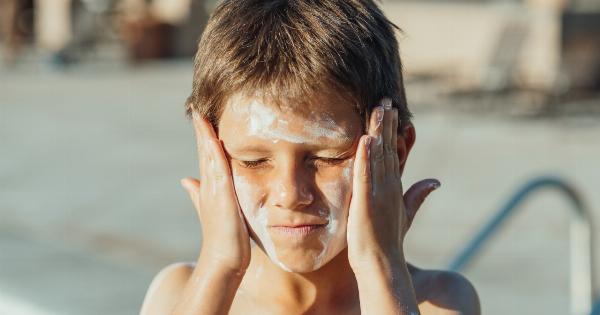As awareness of the damaging effects of the sun’s UV rays increases, many people have started using sunscreen regularly.
Sunscreen has become an essential item for many people, especially during the summer months or when traveling to sunny destinations. However, recent studies suggest that some of the chemicals used in sunscreens could potentially be harmful to human health.
So, are you putting yourself at risk with sunscreen? In this article, we will explore this question in-depth and provide you with the information you need to make an informed decision about whether or not to use sunscreen.
What are the Risks of Sun Exposure?
Before we dive into the potential risks of sunscreen, it’s essential to understand why we need sun protection in the first place. The sun emits various types of UV radiation, including UVA, UVB, and UVC.
UVC radiation is absorbed by the Earth’s atmosphere and doesn’t reach the surface. However, UVA and UVB radiation can cause significant harm to your skin if you’re exposed to them for extended periods.
Excessive exposure to UV radiation can cause sunburn, premature aging, skin damage, and an increased risk of skin cancer. Sunscreen helps to prevent these unwanted outcomes by absorbing or reflecting UV radiation to protect your skin.
However, not all sunscreens are created equal, and some could potentially increase your risk of certain health problems.
Chemical Sunscreen Ingredients
Chemical sunscreen ingredients work by absorbing UV radiation and converting it into heat, which is then released from the skin. Common chemical sunscreen ingredients include oxybenzone, avobenzone, octisalate, octocrylene, homosalate, and octinoxate.
While these ingredients are generally considered safe in small amounts, some studies have found that they could potentially be harmful to human health, particularly with long-term exposure.
Oxybenzone
Oxybenzone is an ingredient commonly found in chemical sunscreens. It is used to absorb UVA and UVB rays. However, studies have shown that oxybenzone can mimic estrogen in the body and disrupt hormone production.
This disruption can cause issues with fertility, reproductive development, and could potentially increase your risk of breast cancer. In addition, oxybenzone has been linked to coral reef damage, prompting Hawaii and Key West to ban the sale of sunscreens containing oxybenzone.
Octinoxate
Octinoxate is an ingredient used in many sunscreens to absorb UVB radiation. Like oxybenzone, octinoxate can disrupt hormone production, particularly in women.
Studies have shown that octinoxate can mimic estrogen and potentially interfere with thyroid function. In addition, octinoxate has been shown to cause premature skin aging when exposed to sunlight.
Physical Sunscreen Ingredients
Physical sunscreen ingredients work by reflecting UV rays away from the skin. They include titanium dioxide and zinc oxide, which are naturally occurring minerals.
Physical sunscreens are generally considered safer than chemical sunscreens because they sit on top of the skin rather than being absorbed into the body. However, they can be thicker and more difficult to spread, potentially leaving a white residue on the skin.
Nanoparticles in Sunscreen
One concern with physical sunscreens is the use of nanoparticles in many formulations. Nanoparticles are microscopic particles that can penetrate the skin.
While titanium dioxide and zinc oxide are generally considered safe, some researchers have raised concerns about the potential harm that certain types of nanoparticles could cause. Nanoparticles can potentially accumulate in the body and cause inflammation, DNA damage, and oxidative stress. However, more research is needed to determine the long-term effects of nanoparticles in sunscreen.
Choosing the Right Sunscreen for You
Choosing the right sunscreen for you is essential. When shopping for sunscreen, look for products that use physical sunscreens, preferably with non-nano sized titanium dioxide and zinc oxide.
Avoid products that contain oxybenzone and octinoxate, as these chemicals could potentially be harmful to human health. In addition, look for sunscreens with an SPF of at least 30. Apply sunscreen liberally and reapply every two hours, or more often if you’re sweating or swimming.
Conclusion
So, are you putting yourself at risk with sunscreen? While sunscreen is essential for protecting your skin from the harmful effects of UV radiation, certain chemicals used in some formulations could potentially be harmful to your health.
The best way to protect yourself is to choose sunscreens that use physical blockers like zinc oxide and titanium dioxide and avoid sunscreens that contain oxybenzone and octinoxate. Remember to apply sunscreen liberally and often and take other sun protection measures like wearing a hat and seeking shade when possible. With proper sun protection, you can enjoy the outdoors safely and confidently.

























